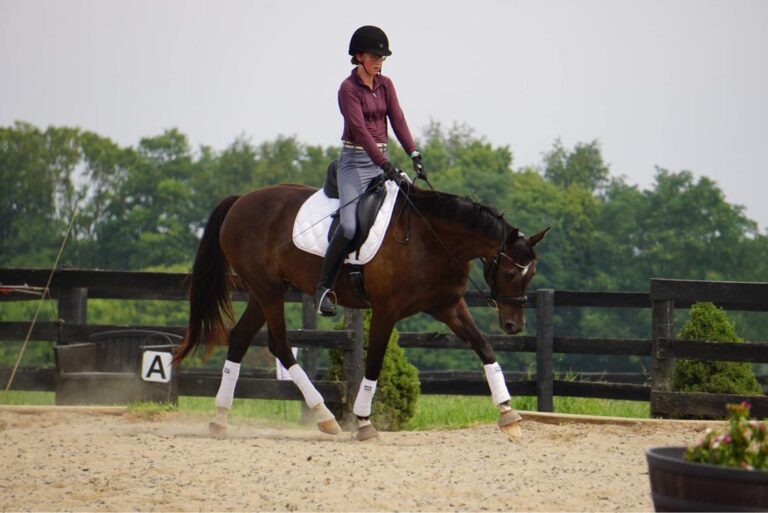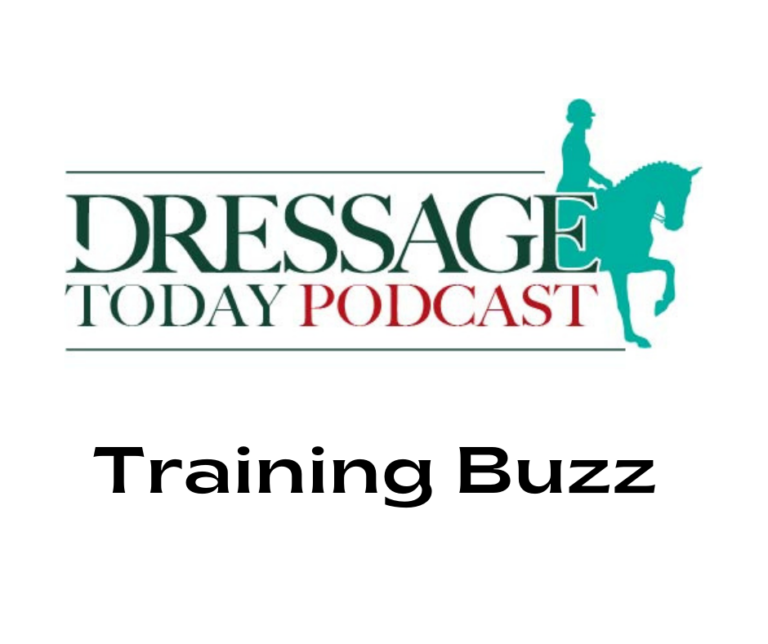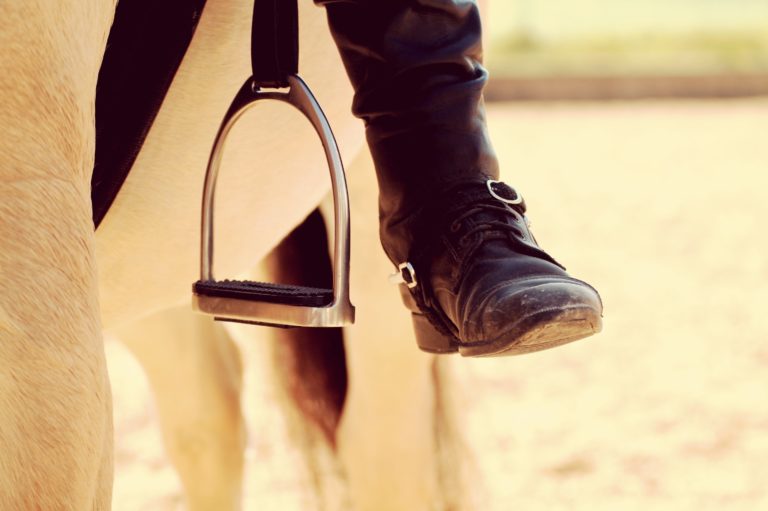Q: I ride in an arena without mirrors. How do I know if my horse is behind the vertical? Are there any signs? —Name withheld by request
A: I clearly remember the days when I, too, rode without mirrors and asked this same question. It is a requirement of dressage that the horse go with his poll at the highest point and his nose slightly in front of the vertical. But how can we be sure that this requirement is met?
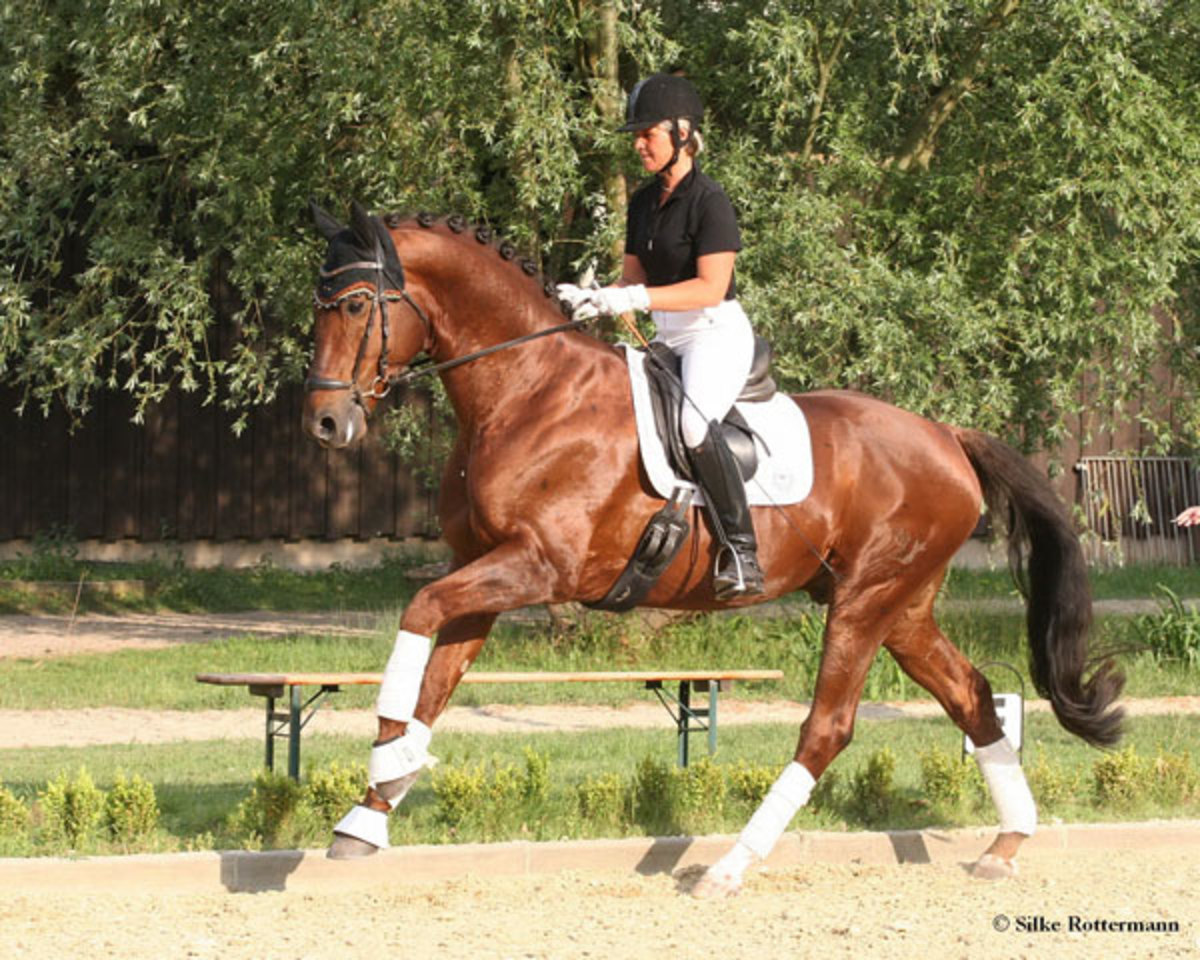
A person on the ground, be it a trainer or helper, is valuable. If a person is not available, mirrors are a good substitute. Given the absence of a ground person and mirrors, how can we feel when the horse is behind the vertical? Sometimes, the horse being behind the vertical actually feels better in the rider’s hands. This may give a false sense of softness. The correct visual aid is when the crownpiece of the bridle is the highest point of the horse’s head.
However, to determine this you must watch your horse’s head, which puts your body in a less-than-ideal posture. To be absolutely correct, your horse must come from behind, over a supple back, and accept the contact with his poll being the highest point and his nose being slightly in front of the vertical.
For the rider to establish the contact correctly, the horse must be in front of the leg, so he must be responsive to a very light leg aid. The USDF Glossary of Judging Terms defines a horse as being “behind the leg” if he is “unwilling to move forward at the same time as accepting the contact/connection” or “slow to react to the leg or sluggish or unwilling to move energetically forward.” Is your horse honestly in front of your leg and seeking the contact or behind the leg?
Please remember it is the horse’s responsibility to seek the contact and the rider’s responsibility to receive this contact with a passive and receiving hand. Too many riders try to create acceptance of the bridle with an active hand instead of creating responsiveness and encouraging the horse to seek the contact. Overactive hands can create a short neck with the poll not the highest point and the nose behind the vertical. It does not matter what the level, the principle remains the same.
We speak of the horse being “on the bit,” “above the bit” or “behind the bit.” According to the USDF Glossary of Judging Terms, the horse that is “behind the bit” retracts or shrinks back from the bit/contact. His head may or may not be behind the vertical. So “behind the vertical” must be assessed according to whether the horse is on the aids of the rider but slightly behind the vertical or whether the rider is restricting the horse. It should feel that the horse is stretching the reins, creating an elastic contact.
This brings us back to the point that I cannot stress enough: The horse is responsible for seeking the contact. It is not the responsibility of the rider to be on the bit. It is the responsibility of the horse to stretch for the contact and be on the bit.
To determine if your horse is really correct in the contact, ride exercises with a giving hand. The horse should maintain his balance, rhythm, tempo, carriage and position. Periodically throughout your ride, stretch your horse long and low. The stretch circle at the trot is an exercise that will demonstrate whether your horse is correctly stretching over his back to seek the contact and whether your training is going in the right direction.
To summarize, learn to feel that your horse is actively seeking the contact from back to front with a swinging back and a soft and elastic contact. When that feeling is achieved, your horse will be going with his poll at the highest point and his nose in front of the vertical.
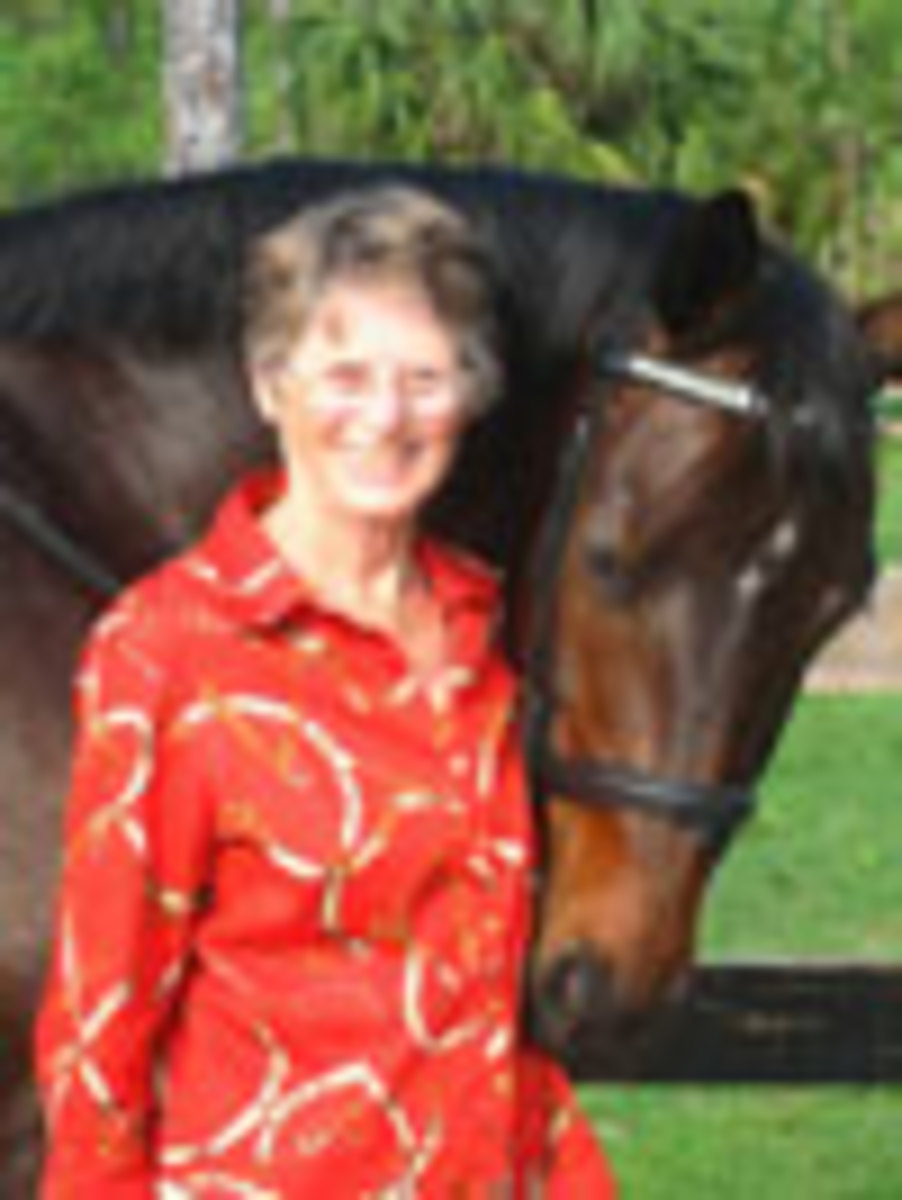
Marilyn Heath is a USEF “S” judge and bronze, silver and gold medalist. She was chairman of the USDF “L” Education Program Committee for nine years, remains on the faculty and is involved in the education of USEF-licensed judges. She received a USDF Lifetime Achievement Award in 2013 in recognition of her service.


